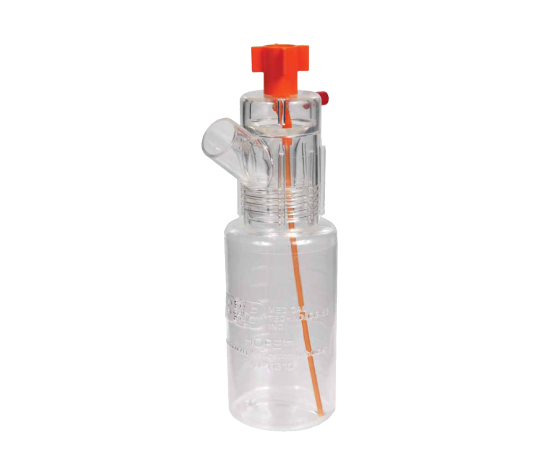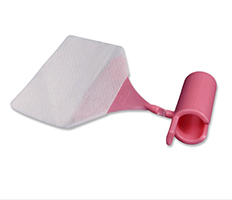Nebulizers are essential medical devices that have transformed respiratory treatment for many patients, especially those with chronic pulmonary conditions. Among the various types of nebulizers, the large volume nebulizer stands out for its specific uses and functionalities. In this article, we’ll explore what a large volume nebulizer is, how it works, and its applications in medical settings.
Understanding Nebulizers
Before diving into the specifics of large volume nebulizers, it’s important to understand what a nebulizer is. Nebulizers are devices that convert liquid medication into a mist, which is then inhaled into the lungs. This method is particularly effective for administering respiratory medications directly into the airways, making it an ideal treatment for conditions such as asthma, chronic obstructive pulmonary disease (COPD), and cystic fibrosis.
What Sets Large Volume Nebulizers Apart?
A large volume nebulizer (LVN) is distinct from other types of nebulizers, such as jet, ultrasonic, and mesh nebulizers. The key characteristic of an LVN is its ability to deliver continuous medication over an extended period, typically ranging from several minutes to hours. This capability makes it particularly useful for patients who require prolonged and steady doses of medication for their respiratory conditions.
How Does a Large Volume Nebulizer Work?
A large volume nebulizer consists of a medication cup, a source for compressed air or oxygen, and tubing to connect to a mask or mouthpiece. The working mechanism involves the following steps:
- Medication Delivery: The patient or healthcare provider pours the prescribed liquid medication into the nebulizer’s medication cup.
- Air Flow: Compressed air or oxygen flows through the tubing and into the medication cup at a controlled rate.
- Aerosol Generation: The airflow creates a high-speed stream that collides with the medication, breaking it into small droplets that form an aerosol mist. This mist is then directed through the tubing to the patient’s mask or mouthpiece.
- Inhalation: The patient breathes in the mist, which delivers the medication directly to the lungs, providing relief from respiratory symptoms.
Key Features of Large Volume Nebulizers
- Continuous Medication: Unlike standard nebulizers, LVNs can administer medication continuously over a prolonged period, which is beneficial for severe respiratory conditions.
- Adjustable Particle Size: Most large volume nebulizers allow the adjustment of particle size, which can be crucial for targeting different parts of the airways.
- High Output: LVNs generally have a higher output rate compared to other nebulizers, ensuring that medication is delivered efficiently and effectively.
Benefits of Using Large Volume Nebulizers
The use of large volume nebulizers comes with several benefits:
- Effective for Severe Cases: For patients with severe respiratory distress, continuous aerosol medication can provide significant relief and improve breathing.
- Versatility: LVNs can be used with a variety of medications, including bronchodilators, steroids, and antibiotics, making them versatile tools in respiratory care.
- Ease of Use: These devices are relatively easy to operate, which is vital for patients who may be experiencing severe symptoms and require immediate treatment.
Applications of Large Volume Nebulizers
Large volume nebulizers are commonly used in hospital settings and at home for patients with chronic respiratory diseases. In hospitals, they are often used in emergency rooms and intensive care units to manage acute respiratory emergencies. At home, they provide ongoing support for individuals managing chronic conditions, ensuring that they can administer their medications as needed without frequent hospital visits.
A large volume nebulizer (LVN) is a medical device designed to deliver aerosolized medication and humidified air to patients, particularly those with respiratory conditions. Unlike standard nebulizers that administer small doses of medication, LVNs are equipped to provide continuous aerosol therapy over extended periods. This makes them ideal for treating severe respiratory ailments in a controlled setting, such as a hospital.
The device operates by mixing air or oxygen with liquid medication to create a fine mist that can be easily inhaled into the lungs. The key component of an LVN is its high-capacity chamber, which holds a larger volume of the liquid solution, allowing for prolonged treatment without the need for frequent refills. The aerosol produced is then delivered to the patient through a mask or a tracheostomy collar, ensuring that a consistent and therapeutic dose reaches the airways, facilitating effective breathing management.
Conclusion
Large volume nebulizers are invaluable devices in the management of respiratory conditions, particularly for patients requiring intensive and prolonged treatment. By converting liquid medication into a breathable mist, these nebulizers ensure that the medication is delivered directly to the lungs, offering quick and effective relief. Whether used in clinical settings or at home, large volume nebulizers play a crucial role in respiratory care, making them a staple in the treatment of severe respiratory ailments.


